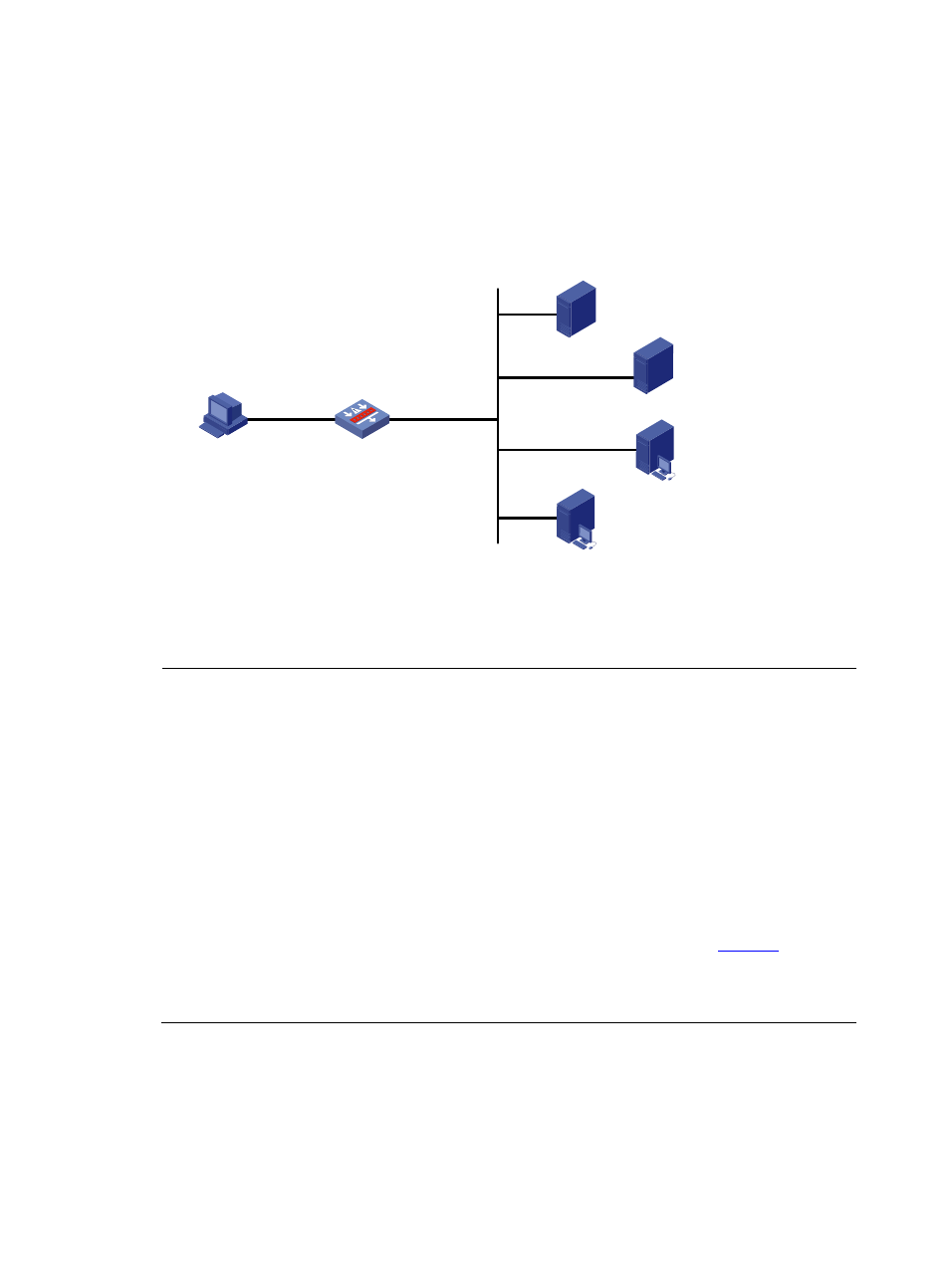Configuration procedure – H3C Technologies H3C SecPath F1000-E User Manual
Page 30

29
portal authentication, the host uses an assigned private IP address. After passing the authentication,
the host can get a public IP address.
•
When users using the host have passed identity authentication but have not passed security check,
they can access only subnet 192.168.0.0/24. After passing security check, they can access Internet
resources.
•
A RADIUS server serves as the authentication/accounting server.
Figure 13 Configure re-DHCP portal authentication with extended functions
Host
automatically obtains
an IP address
192.168.0.111/24
192.168.0.114/24
192.168.0.112/24
Device
GE0/2
20.20.20.1/24
10.0.0.1/24 sub
GE0/1
192.168.0.100/24
Portal server
Security policy server
DHCP server
192.168.0.113/24
RADIUS server
Configuration procedure
NOTE:
•
For re-DHCP authentication, you need to configure a public address pool (20.20.20.0/24, in this
example) and a private address pool (10.0.0.0/24, in this example) on the DHCP server. The
configuration steps are omitted. For DHCP configuration information, see
DHCP Configuration in the
Firewall Web Configuration Manual.
•
For re-DHCP authentication, Device must be configured as a DHCP relay agent (instead of a DHCP
server) and the portal-enabled interface must be configured with a primary IP address (a public IP
address) and a secondary IP address (a private IP address).
•
Make sure that the IP address of the portal device added on the portal server is the private IP address of
the interface connecting users (10.0.0.1 in this example), and the IP address group associated with the
portal device is the private network segment where the users reside (10.0.0.0/24 in this example).
•
You need to configure IP addresses for Host, Device, and the servers as shown in
and ensure
that they can reach each other.
•
Perform configurations on the RADIUS server to ensure that the user authentication and accounting
functions can work normally.
Perform the following configuration on Device:
Step1
Configure a RADIUS scheme
# Create a RADIUS scheme named rs1 and enter its view.
[Device] radius scheme rs1
